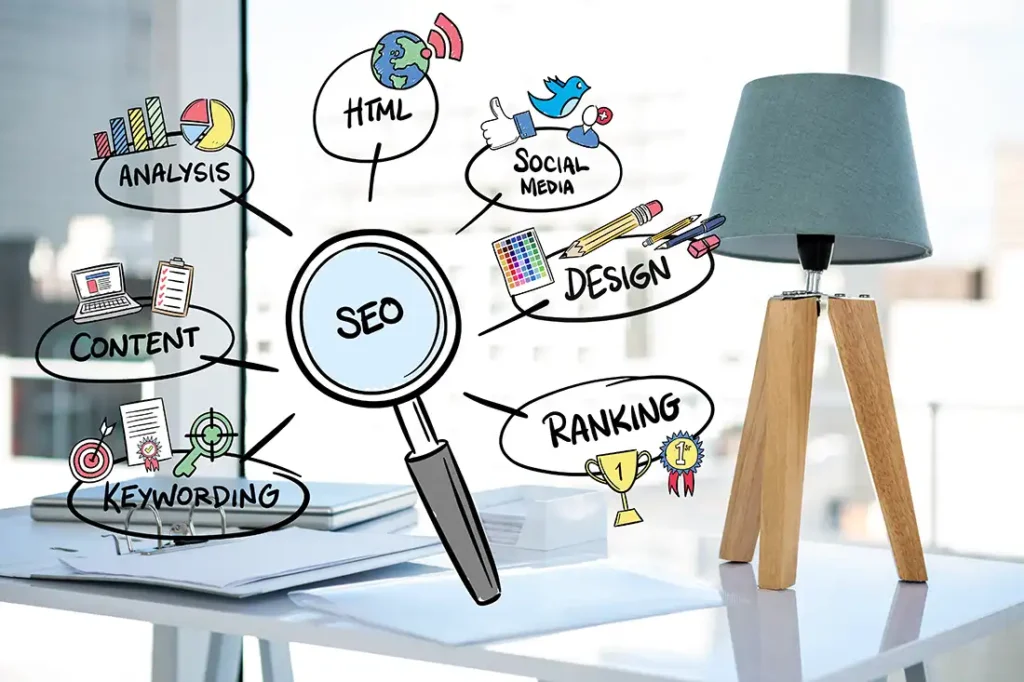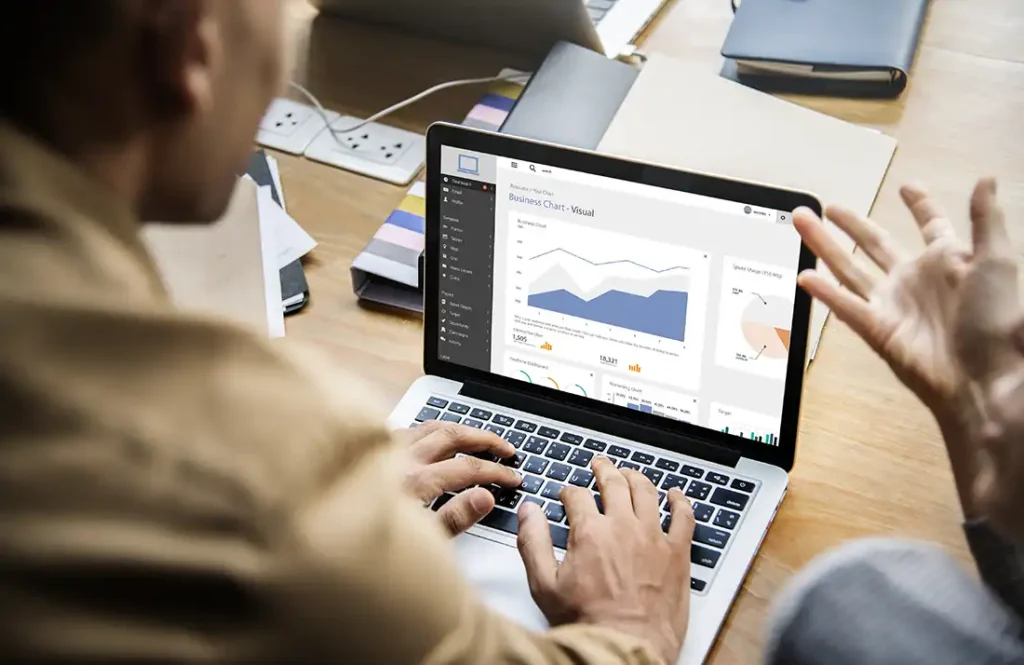Get more qualified customers without spending money on ads
Right now, potential customers are searching for your services on Google. They’re typing in phrases like “best plumber near me,” “digital marketing for small business,” or “HVAC repair [your city].”
The question is: Are they finding you or your competitors?
If you’re like most small business owners, you’re probably spending money on Facebook ads, Google Ads, or other marketing that stops working the moment you stop paying. Meanwhile, your competitors who understand SEO are getting a steady stream of qualified leads 24/7 – without paying for each click.
Here’s what most business owners don’t realize: Your website can be your best salesperson, working around the clock to bring you customers who are already looking for exactly what you offer.
In this guide, you’ll learn the exact system successful businesses use to dominate local search results and generate consistent leads through SEO. No technical jargon, no expensive tools required – just proven strategies you can start implementing today.
SEO drives better leads than paid ads – People who find you through search are actively looking for your services and convert 3x better than cold traffic.
71% of clicks go to first-page results – If you’re not on page one for your target keywords, you’re invisible to most potential customers.
Lower cost per lead – After initial setup, SEO leads cost significantly less than paid advertising leads over time.
Local businesses have huge advantages – 46% of Google searches have local intent, and most small businesses aren’t optimizing for local SEO properly.
Results take 3-6 months – SEO isn’t instant, but businesses that stick with it often dominate their local markets within a year.
You can start today – 80% of effective SEO comes from basics: Google Business Profile, fast website, helpful content, and clear contact forms.
Mobile-first is crucial – 60% of searches happen on mobile devices, so your website must work perfectly on phones.
Track what matters – Focus on leads generated, not just traffic or rankings.

You’ve built a great business, but getting new customers feels like an uphill battle. You’re spending money on ads, posting on social media, and sending emails. But quality leads are still hard to find.
Here’s the good news: Your website can work 24/7 to bring you qualified customers who are already looking for what you offer.
Search Engine Optimization (SEO) brings you 3x more qualified leads than paid ads. Here’s why:
The numbers don’t lie: 71% of people click on first-page results, and 59% of B2B companies use SEO as their main way to get leads.

Before you optimize anything, get crystal clear on who you’re targeting.
For local businesses:
For B2B companies:
Action item: Create a simple customer profile with their problems, search habits, and buying triggers.
Target keywords that show buying intent, not just high search volume.
High-intent keywords include:
Tools to use:
Pro tip: Long-tail keywords (3-4 words) often convert better than short ones.
Your content should solve real problems and guide visitors to contact you.
Content that generates leads:
Content structure:
Technical must-haves:
On-page optimization:
Getting traffic means nothing if visitors don’t become customers.
Lead capture strategies:
Best practices:
If you serve local customers, local SEO can increase your leads by 40%.

Complete these essentials:
Instead of “plumbing services,” target:
Track these key numbers to see if your SEO is working:

Traffic metrics:
Lead metrics:
Business metrics:
Monthly review: Check these numbers monthly and adjust your strategy based on what’s working.

Mistake: Going after high-volume, low-intent keywords
Fix: Focus on buyer-intent keywords with local modifiers
Mistake: Website takes 5+ seconds to load
Fix: Optimize images, use caching, upgrade hosting
Mistake: Visitors don’t know what to do next
Fix: Add obvious contact buttons and forms
Mistake: Website doesn’t work well on phones
Fix: Use responsive design and test on mobile devices
Mistake: Getting leads but not converting them
Fix: Set up automated email sequences and quick response times

Set up Google Analytics and Search Console
Claim and optimize Google Business Profile
Research 10 target keywords for your business
Audit your website speed (use Google PageSpeed Insights)
Write 2 blog posts targeting your keywords
Create or update your service pages
Add customer testimonials to your website
Set up contact forms on key pages
Create location-specific pages if needed
Get listed in local directories
Ask 5 customers for Google reviews
Post updates to Google Business Profile
Set up lead tracking in Google Analytics
Test different call-to-action buttons
Review your first month’s data
Plan next month’s content
SEO isn’t just about rankings – it’s about getting qualified customers to find your business when they need you most.
Start with these three things:
Remember: SEO is a marathon, not a sprint. But businesses that stick with it see compound results over time.
SEO isn’t magic – it’s a proven system that works when done right. While your competitors are spending thousands on ads every month, you can build a website that brings in qualified leads 24/7 without ongoing ad costs.
Start small, stay consistent. You don’t need to do everything at once. Pick one strategy from this guide and implement it this week. Then add another next month.
Most business owners who stick with SEO for 6 months see a significant increase in qualified leads. The businesses that combine great SEO with excellent service often dominate their local markets.
Your website should be your best salesperson. If it’s not bringing in leads right now, it’s time to make some changes.
Most businesses see initial improvements in 3-4 months, with significant results by month 6. Local SEO often works faster – you might see Google Business Profile improvements within weeks.
The timeline depends on your industry competition and current website condition. Service businesses with little online competition often see faster results than highly competitive markets.
For small businesses, budget $500-2000/month for professional SEO services. DIY SEO costs mainly time – expect 5-10 hours per week if you’re doing it yourself.
ROI is usually positive within 6 months. Most businesses find SEO costs less than paid advertising while bringing better-quality leads.
You can handle basic SEO yourself using this guide. Start with Google Business Profile optimization, basic keyword research, and creating helpful content.
Consider hiring experts for technical issues, competitive markets, or if you want faster results. Professional SEO saves time and avoids costly mistakes.
Google Ads: Pay for each click, results stop when you stop paying, works immediately
SEO: No cost per click, long-term results, takes time to build momentum
Both have their place. SEO is better for long-term growth and building trust. Ads work well for immediate results and testing new markets.
Track these monthly:
If these numbers trend upward over 3-6 months, your SEO is working.
Focus on local SEO if:
Focus on general SEO if:
Most service businesses should prioritize local SEO first.
Competition means there’s demand for your services – that’s good news! You can still succeed by:
